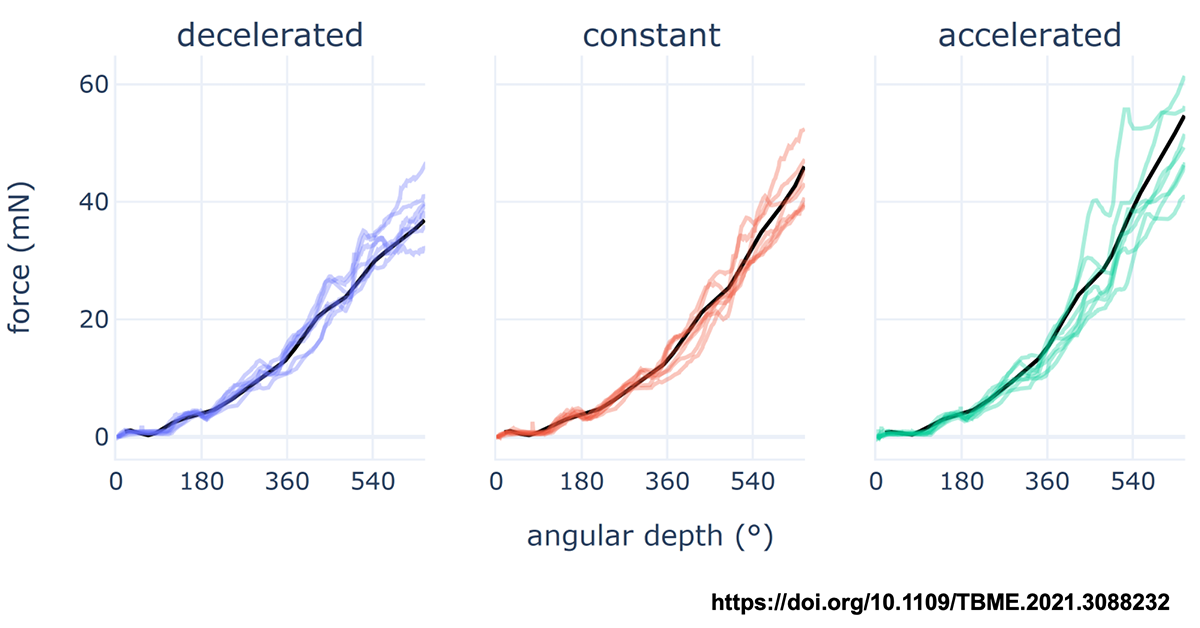2021/06/16 | Research | Surgical technologies
Less Damage in Cochlear Implant Insertion
The insertion of the electrode array is a critical step in cochlear implantation. A study by the Hearing Research Lab of the ARTORG Center and Inselspital ORL Department now shows that optimal alignment of the insertion trajectory with the scala tympani and non-constant insertion speed profiles contribute to mitigating injuries potentially optimizing patient outcomes. The study may help to provide clinical guidelines and to improve surgical tools for manual and automated cochlear implantation .
 Force exertion during automated cochlear implant array insertion with different speed profiles. Applying a non-constant, decelerating speed profile reduces the peak forces observed during insertion by 10% for the same total duration. In contrast, an accelerated insertion profile results in higher peak forces and is more likely to damage the structures at risk
(© ARTORG Center for Biomedical Engineering Research, University of Bern)
Force exertion during automated cochlear implant array insertion with different speed profiles. Applying a non-constant, decelerating speed profile reduces the peak forces observed during insertion by 10% for the same total duration. In contrast, an accelerated insertion profile results in higher peak forces and is more likely to damage the structures at risk
(© ARTORG Center for Biomedical Engineering Research, University of Bern)
Using artificial scala tympani models with accurate macroanatomy and controlled frictional properties, the researchers studied the impact of the alignment angle and feed-forward speed on deep electrode array insertions. They performed over 1000 robotic insertions on six scala tympani models with varying speeds and alignment angles, evaluating reaction forces and micrographs of the insertion process and developing a mathematical model to estimate the normal force distribution along the electrode arrays.
The study results show that insertions parallel to the cochlear base significantly reduce insertion energies and lead to smoother array movement. In addition, non-constant decelerating insertion speeds allow to reduce insertion forces for a fixed total insertion time compared to a constant feed rate.